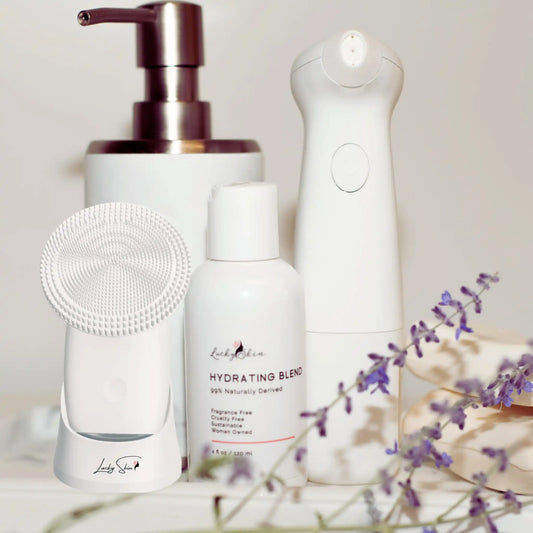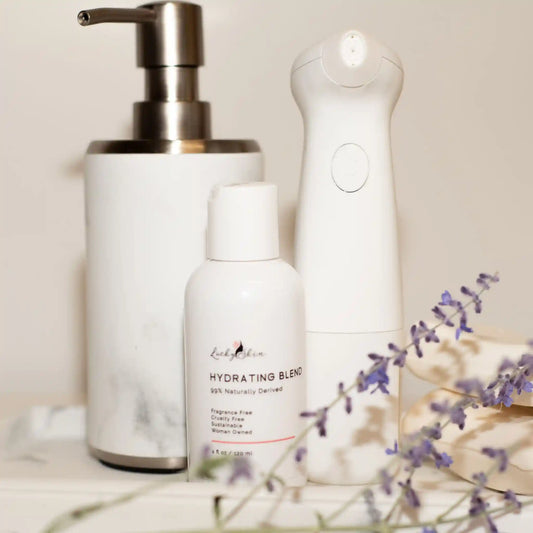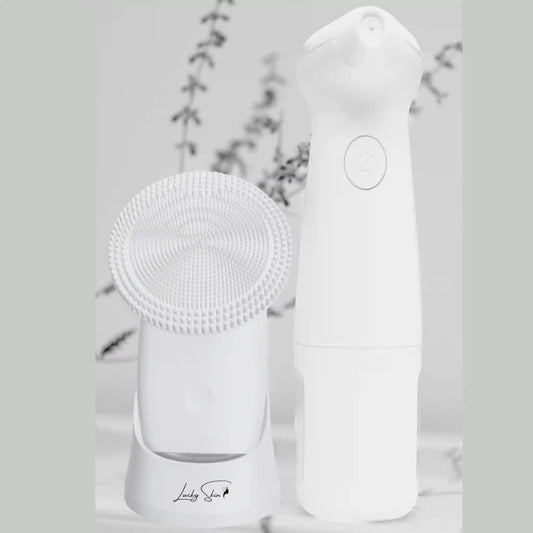5 Reasons Your Skincare Routine Isn’t Working (and How to Fix It)
Share
Picture this: glowing, flawless skin that feels as good as it looks. It’s the ultimate goal of any skincare routine, yet for many of us, the results seem frustratingly out of reach. Despite shelves full of promising products and endless advice from social media skincare gurus, our efforts often fall short—and we’re left wondering why.
Here’s the truth: achieving radiant, healthy skin isn’t just about following trends or splurging on the latest serums. It’s about understanding your skin, avoiding common pitfalls, and creating a routine that works for you. The good news? You don’t have to navigate this journey alone.
In this guide, we’re breaking down the five biggest reasons your skincare routine might not be delivering the results you’re after—and, more importantly, how to fix them. From mismatched products to sunscreen slip-ups, we’ll uncover what’s holding your skin back and empower you with actionable solutions. Ready to troubleshoot your way to a glowing complexion? Let’s get started.
Using the Wrong Products for Your Skin Type
Why It’s a Problem
Your skin has unique needs, and when the products you use don’t align with your skin type, the results can be disastrous. Imagine applying a rich, heavy cream to oily skin—it’s like pouring fuel on the fire, leading to clogged pores, excess shine, and breakouts. On the flip side, using lightweight, mattifying products on dry skin can strip away precious moisture, leaving it feeling tight and flaky.
The wrong products not only fail to address your concerns but can actively create new ones, such as irritation, redness, or dullness. This mismatch is one of the most common reasons skincare routines underperform—and the good news is, it’s entirely fixable.
How to Fix It
The first step to solving this problem is understanding your skin type. Here’s a quick guide:
- Normal skin: Balanced, with minimal dryness or oiliness.
- Oily skin: Prone to shine, especially in the T-zone, and often accompanied by enlarged pores.
- Dry skin: Feels tight, rough, or flaky, and may have visible lines.
- Combination skin: Oily in some areas (usually the T-zone) but dry in others.
Once you’ve identified your skin type, choose products specifically designed to meet its needs. For oily skin, opt for lightweight, non-comedogenic, and purifying formulations. Dry skin benefits from richer creams packed with hydrating ingredients like hyaluronic acid and ceramides. If you have sensitive skin, prioritize gentle, fragrance-free products to avoid irritation.
Inconsistent Routine
Why It’s a Problem
When it comes to skincare, consistency is king. Active ingredients like retinol, vitamin C, and niacinamide need time—and regular use—to work their magic. Skipping days or randomly applying products disrupts this process, preventing you from seeing the full benefits. Imagine planting a seed but forgetting to water it; without care and attention, growth stalls.
How to Fix It
Building consistency starts with making your routine realistic and easy to follow. Here’s how:
- Create a habit loop: Link your skincare routine to existing habits, like brushing your teeth in the morning and before bed.
- Set reminders: Use phone alarms or apps to prompt you until it becomes second nature.
- Simplify your steps: A routine doesn’t need to be elaborate; stick to a cleanser, moisturizer, and sunscreen for the basics.
Patience is equally important. Many skincare products take at least six weeks of consistent use to show visible results. Resist the urge to jump ship too early—give each product time to prove its worth. Keep a journal to track changes, so you’re more likely to notice subtle improvements over time.
Remember, skincare is a marathon, not a sprint. A steady, dedicated approach will pay off in healthier, more radiant skin.
Not Enough Exfoliation
Why It’s a Problem
Your skin is constantly renewing itself, but when dead skin cells linger on the surface, they can clog pores, dull your complexion, and make your skin feel rough. Over time, this buildup can even lead to uneven skin tone and reduce the effectiveness of your skincare products, as they struggle to penetrate the blocked surface layer.
Signs of under-exfoliation are easy to spot: think rough patches, flaky areas, and a general lack of radiance. If your makeup isn’t sitting right or your skin feels congested, it might be time to step up your exfoliation game.
How to Fix It
Exfoliation is all about balance—enough to keep your skin smooth and glowing, but not so much that it irritates or damages your skin barrier. Here’s how to do it right:
-
Pick the right exfoliant for your skin type:
- Chemical exfoliants (like AHAs and BHAs) work by dissolving the bonds between dead skin cells. For example, glycolic acid is great for normal to dry skin, while salicylic acid is perfect for oily, acne-prone types.
- Physical exfoliants (like scrubs) manually buff away dead cells but can be harsh if not used gently. For an advanced yet safe option, try tools like the Lucky Skin Hydro Dermabrasion System, designed for home use to deliver professional-grade results without overdoing it.

Neglecting Sunscreen
Why It’s a Problem
The sun’s rays might feel warm and inviting, but they’re also one of the biggest threats to your skin’s health. Ultraviolet (UV) exposure accelerates aging by breaking down collagen, leading to wrinkles and sagging. It’s also a major culprit behind hyperpigmentation and dark spots, not to mention its role in increasing the risk of skin cancer.
Skipping sunscreen—even on cloudy days or while indoors—leaves your skin vulnerable. UV rays penetrate windows and linger year-round, making daily protection an absolute must for maintaining a healthy, youthful complexion.
How to Fix It
Incorporating sunscreen into your routine is simple, but consistency is key. Here’s how to do it right:
- Choose the right product: Look for a broad-spectrum sunscreen with SPF 30 or higher to shield against both UVA and UVB rays. Lightweight, non-greasy formulas are perfect for everyday wear, and tinted options can double as a makeup base.
- Apply it properly: Use about a nickel-sized amount for your face and neck, ensuring even coverage. Sunscreen should be the final step in your morning skincare routine.
- Reapply throughout the day: Sunscreen doesn’t last forever—reapply every two hours, especially if you’re sweating or spending time outdoors. Compact sunscreens, spray options, or SPF-infused powders make midday touch-ups effortless.
Overloading on Products
Why It’s a Problem
When it comes to skincare, more isn’t always better. Using too many products—especially those packed with active ingredients—can overwhelm your skin, leading to clogged pores, irritation, or even breakouts. Overloading on treatments can also disrupt your skin’s natural barrier, leaving it more sensitive and prone to damage.
How to Fix It
Streamlining your skincare routine can work wonders for your skin’s health and your peace of mind. Here’s how to simplify without sacrificing results:
- Focus on the essentials: A basic routine—cleanser, moisturizer, and sunscreen—is enough for most skin types. These staples cleanse, hydrate, and protect, creating a solid foundation for healthy skin.
- Introduce new products gradually: Add one new product at a time and use it consistently for a few weeks to monitor how your skin reacts. This approach helps identify potential irritants or conflicts.
- Customize based on your needs: If your skin requires targeted treatment (like serums for acne or anti-aging), incorporate them sparingly and only as needed.




